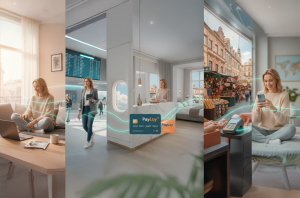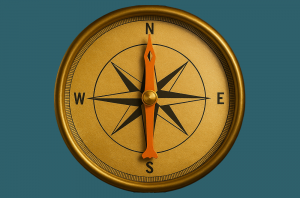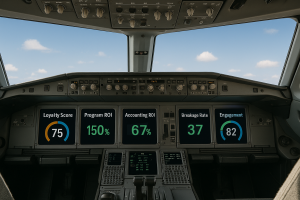Airline loyalty tiers are like frequent-flyer lounges: everyone has one, but only a few make you want to stay longer.
Silver, Gold, Platinum – we all know the hierarchy. For years, it has been the backbone of airline loyalty. But as the industry shifts toward flexible pricing, personalized experiences, and integrated partner ecosystems, the question isn’t whether to have tiers. It’s how to make them smarter.
And lately, some airlines are doing exactly that.
The Old Model Is Reaching Its Limits
Most programs still follow an annual rhythm: fly this much, spend that much, keep your status. It’s predictable, but it doesn’t flex when markets change or when traveler behavior shifts.
Imagine rewarding a commuter who takes 40 short flights a year the same way you reward an executive who flies long haul once a month. Or penalizing loyal customers because they didn’t travel during a crisis year. That’s where the traditional model is reaching its limits.
Alaska Airlines spotted this early. Their status-match challenge gives travelers from other programs a 90-day window to prove their loyalty. It’s a smart way to attract high-value flyers outside the traditional tier framework without handing out elite cards freely. This kind of responsive tiering is becoming the new normal: faster to adapt, smarter to manage, and closer to how people actually travel.
Status as a Strategy, Not a Symbol
Here’s what’s changing: tier benefits are no longer just member rewards. They’re investment levers.
A McKinsey study found that aligning loyalty program benefits with customer lifetime value can boost profitability by up to 50 percent. Think about that – the same budget, when deployed with greater precision, delivers better results.
United Airlines provides a strong example. Their PlusPoints system turned upgrades into a flexible currency. Members can choose to use PlusPoints for upgrades, gift status to others, or convert them into bonus miles. The airline keeps value visible, and members feel in control. That’s what happens when loyalty shifts from recognition to optimization.
Recognition Moments Matter More Than Perks
One of the biggest shifts we’re seeing is emotional, not technical. Travelers don’t just want more perks. They want timely recognition.
Lufthansa’s Miles & More has been exploring this through sustainability incentives. Members earn extra points when booking CO₂-offset packages, connecting recognition with personal values. Small gestures like these create emotional equity that lasts longer than another round of bonus miles.
Recognition frequency often drives loyalty more effectively than recognition size. A quick thank-you, an anniversary message, or a small milestone badge can keep engagement alive all year.
Personalization: The Next Loyalty Upgrade
Tiered loyalty doesn’t have to mean one size fits all. Some airlines are now letting members personalize their elite experience by selecting benefits that match their travel style or by choosing their preferred earning scheme. A frequent short-haul flyer might trade lounge access for free seat selection, while a long-haul executive prefers extra upgrade credits.
United MileagePlus Premier members can customize their travel experience with selectable benefits like PlusPoints for upgrades, complimentary Economy Plus seating, priority services, and expanded award availability across United and Star Alliance flights. Alaska lets members decide how they earn – by miles flown, money spent, or number of segments. That flexibility tells customers “we understand you,” while giving finance teams the ability to model every benefit precisely.
LOOKING TO EXPLORE MORE REAL-WORLD CASES?
Learn more about how our clients are transforming their loyalty programs.
The Hidden KPI: Status Elasticity
Here’s a new term worth remembering: status elasticity. It measures how much behavior changes when you move a customer up or down a tier.
Once you start tracking that, loyalty becomes measurable. You can quantify what a soft upgrade or an early requalification really delivers in incremental spend. With platforms like LPS FLITE, those insights are visible in real time and easy to act on.
So, What Does the Future Look Like?
The future of loyalty isn’t about more tiers. It’s about smarter ones.
It’s about flexible qualification, modular rewards, and continuous recognition woven into every interaction. It’s about treating status not as an annual ritual but as a living, adaptive part of the customer journey.
Or put simply, stop counting cards and start managing behavior.
Final Boarding Call
Airline loyalty has come a long way since the first paper upgrade voucher. Today, the most progressive programs – from Alaska and United to Lufthansa – show that status can be both personal and profitable.
And with technology like LPS FLITE, this kind of agility and precision is no longer a dream. It’s a dashboard.
For loyalty leaders, the real question is not how many Gold members you have. It’s what each status level actually delivers to your business and your brand.
Because in the next decade of loyalty, recognition will matter more than rewards, and agility will matter most of all.
Conclusion
Tiered programs still matter, but their future lies in smarter design and agile management. Airlines like Alaska, United, and Lufthansa show that when status becomes responsive, personalized, and emotionally relevant, loyalty stops being a cost center and becomes a true growth engine.
Let’s design the growth engine your travelers deserve. Learn more about LPS FLITE.






